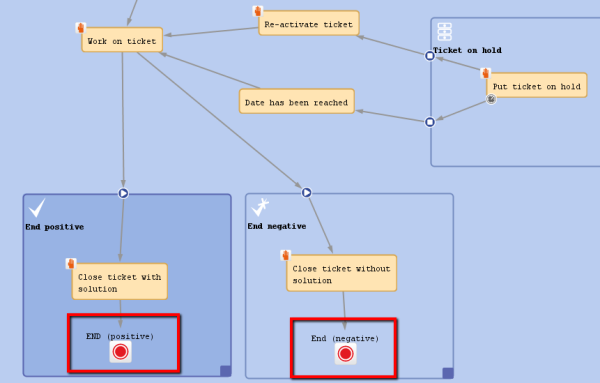
A workflow in ConSol CM can have one or more END nodes.
Figure 32: ConSol CM Process Designer - End nodes
An end node represents the closing of the ticket, i.e. when a ticket is passed to an end node it is closed in a technical sense.
However, assuming engineers have the required access permissions, they can still read the ticket. This is an important basis for the use of all ConSol CM tickets of a system as knowledge base.
The passing of the ticket to the end node can be a manual or an automatic action. In the figure above, the end nodes are automatic nodes, i.e. the ticket passes to this node when the previous activity has been performed.
As a minimum a workflow has to contain one end node, because there has to be a way to close the ticket.
You might want to create more than one end node. This can be helpful when you create reports, e.g. to distinguish between positive and negative endings.
An end node might have a script, i.e. before the ticket is closed, a script can be executed.
Sometimes, it might be required to set a ticket to closed, completed, or done from an engineer's point of view, i.e. to set a ticket to a preliminary END. After a while, if there are no more questions or remarks from the customer, the ticket should be closed automatically. You can achieve this by setting a time trigger to an end activity and letting the ticket go to the end node automatically after the defined time (see following figure).
Figure 33: ConSol CM Process Designer - End nodes reached via time trigger
Figure 34: ConSol CM Process Designer - End node properties
Properties: